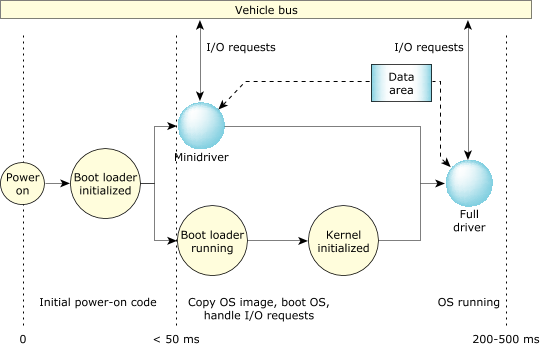During the normal QNX Neutrino boot process, a driver process can't run until the OS image has been loaded into the RAM, and the kernel has been initialized. Depending on the particular hardware (processor, flash, architecture) and the OS image size, this time can be in the order of hundreds of milliseconds or even seconds. To reduce this time, a minidriver runs much earlier in the boot process to take care of the timing requirements for some bus protocols such as MOST or CAN.
Defined in the system's startup code, a minidriver runs user code before the operating system has been booted. This code could include responding to hardware power-up messages in a quick, timely fashion and ensuring that no message is lost when the OS boots up. The code can be invoked at several points during system initialization.
Once the OS has booted, the minidriver may continue running, or it may pass control to a full-featured driver that can access any data the minidriver has buffered.
 Figure 1. Booting process using instant device activation.
Figure 1. Booting process using instant device activation.